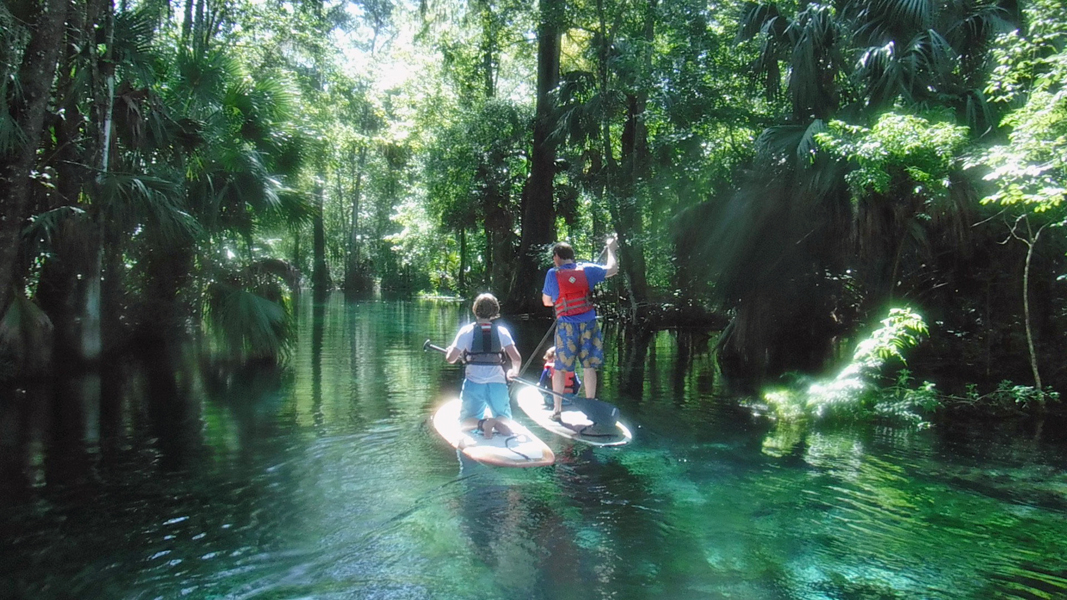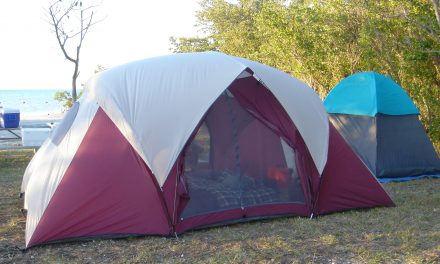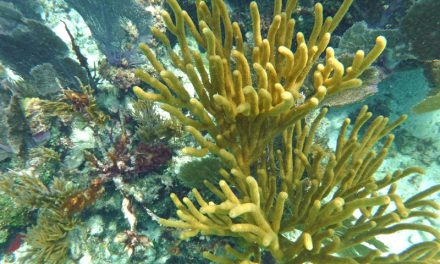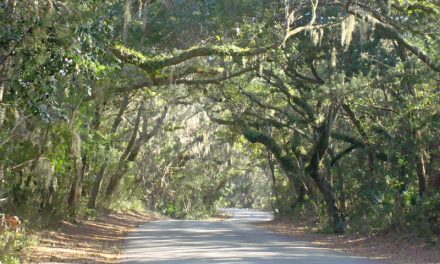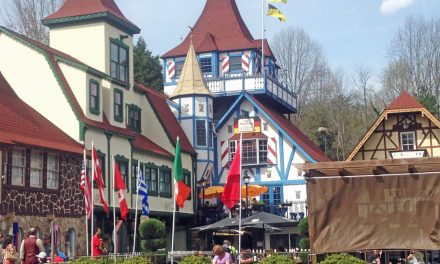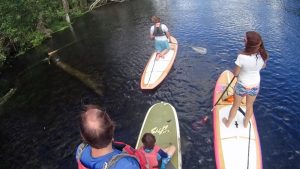
Family paddleboarding on Silver River
We floated 30 feet above the opening in the earth. Well, we were on our paddleboards, floating on the water. The opening in the earth was a freshwater spring below us. And the 30 feet was more or less the depth of the spring. It was a crystal-clear view straight to the bottom. Our family paddled from spring to spring like this on Silver River, in Silver Springs State Park in Ocala, Florida.
Looking down into this beautiful pool of aquamarine water, anyone can see why Florida’s springs are called “bowls of liquid light.” They look like they are lit up from below. Several of these springs pump out hundreds of millions of gallons of water each day, making Silver Springs one of Florida’s 33 first-magnitude springs. There are several springs around Florida, primarily in the northern and central parts of the state, with varying magnitudes of water flow.
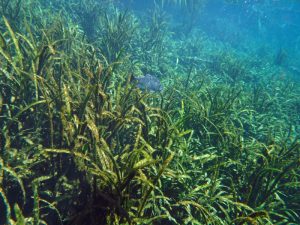
Ocala’s freshwater springs are crystal clear — look for fish like this mullet in the underwater grasses
Our family came to paddleboard in Silver Springs and to explore nearby Ocala National Forest, which has 4 springs of its own: Juniper Springs, Salt Springs, Silver Glen Springs, and Alexander Springs. Each of these springs creates a run, or river (sometimes more like a creek) that flows eventually into the St. Johns River. The water is so clear that it’s usually easy to see the river bottom, along with fish, turtles, water birds, and maybe even a manatee. There are alligators in the spring runs, usually on a bank or log, sunning themselves.
The clear water in a forested surrounding makes the springs around Ocala a great place for an outdoorsy family trip. Here’s the lowdown on exploring these 5 springs.
Silver Springs
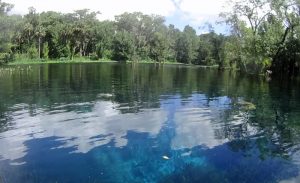
Several freshwater springs feed the Silver River in Ocala
One of the largest artesian springs in the world, Silver Springs was once one of the first attractions or theme parks in Florida, going back to the 1870s. I remember going with my family as a 4-year-old girl and riding one of the glass-bottom boats the park is still famous for, even though it’s now been run by the state since 2013. The state previously operated Silver River State Park to the south, and now both together are called Silver Springs State Park. The northern entrance is where you’ll go to take a boat tour or paddle the river. The southern entrance has trails and a campground that includes RV and tent sites, and 10 cabins.
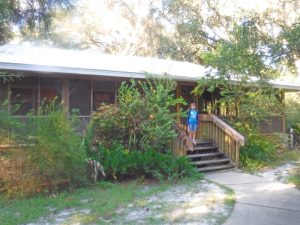
Silver Springs State Park cabins are the perfect mix of rustic and modern
Our family has stayed in the cabins a couple times, and we recommend them. Each cabin includes 2 bedrooms; a full kitchen with cookware, servingware, and utensils; a gas-operated fireplace; and central heating and cooling. Cabins also have rocking chairs on a large porch, benches around a campfire pit, and beautiful old oak trees dripping with Spanish moss, lending a rustic feel to these modern houses.
Not far from the campground is a museum with exhibits on the area’s natural and cultural history. This is also the trailhead for a path that takes you to the Silver River, where we have seen wild monkeys! The rhesus macaques aren’t native to Florida, but descended from monkeys brought to Silver Springs in the 1930s to make the attraction more jungle-like. Feeding the monkeys has caused them to lose their natural fear of people, which has led to some attacks on visitors. Because of this, the state hopes to get rid of the monkeys, which carry the herpes virus. Besides this river trail, there are several miles of other trails, including equestrian and bike trails.
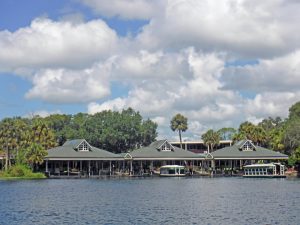
Silver Springs’ famous glass-bottom boats tour the springs along the Silver River
To see the springs, take the glass-bottom boat tour, which goes over the spring heads while the tour guide talks about the springs and the area’s history and ecology. Because boats run along the river and over the springs, there is no swimming in the park. However, our family was able to get close to the springs by paddling. From the main entrance to the springs and boat tour, on the other side of the parking lot is a paddlecraft launch. If you don’t have your own kayak or board, you can rent here from the outfitter. Paddle the clear water in a 1-mile loop, or go even farther down the Silver River. Look for wildlife, wildflowers, and the abandoned buildings from the area’s days as a theme park.
Tip: If you stay overnight in the park, your entrance fee is included, and your launch fee is waived if you bring your own paddlecraft.
Juniper Springs
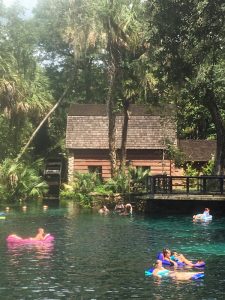
Juniper Springs is a popular swimmin’ hole in Ocala National Forest
About a half-hour drive east of Silver Springs is Juniper Springs Recreation Area in Ocala National Forest. Unlike Silver Springs where there is no swimming, here the main spring is a “swimmin’ hole” as the major draw. Nearly surrounded by man-made steps down to the water, the spring is about 21 feet at its deepest. The spring run powers the wheel of an old mill house you can enter. There are restrooms with showers and a concessioner that sells snacks, water floats, and other supplies.
Beyond there, you can paddle the spring run, a 7-mile 1-way trip that takes 3-5 hours to complete. Rent a canoe (no children under 40 pounds) or bring your own paddlecraft and put in no later than 11:45 am to get to the takeout, where the outfitter will shuttle people and crafts back to Juniper Springs.
Take the 1.4-mile boardwalk trail through the swamp to see Fern Hammock Springs, another beautiful spring area. There’s no getting into the water here, but you can see fish and turtles enjoying it. Tip: There is a sandy path through the Tropical Camp Area campground we discovered by mistake that is a shortcut to Fern Hammock Springs. The trail is probably meant for campers. If you take it, you’ll get to the springs faster, but you’ll miss out on seeing the swamp.
Juniper Springs has 79 campsites in 3 loops. There’s no water, electric, or sewer hookups, but there are restrooms with showers and potable water. We haven’t camped in this forest yet, but the setting looks great, so it’s on our list.
Alexander Springs
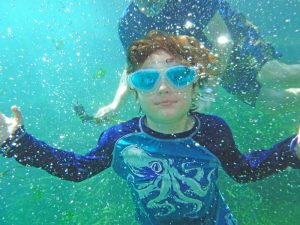
Get a clear view underwater in Florida’s springs
The southernmost spring in the southernmost national forest in the continental USA just might be the best one in the forest for families. A sandy beach that becomes a sandy-bottom shallow swimming area makes Alexander Springs a really great one for kids. It’s also kept mostly natural. The wide swimming area is mostly shallow until you get to the spring head, where the depth drops off. There are restrooms with showers and a concessioner that sells snacks, water floats, and other supplies. This is also a great place for a picnic.
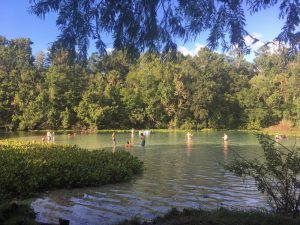
Alexander Springs is a great recreation area for families
Beyond the swimming area is a spring run where you can paddle. The launch area is well done here. Bring your own craft or rent from the recreation area concession.
There’s a trail about a mile long that leads around the spring head to the other side of the spring run. This trail, named Timucuan for the native inhabitants, goes through a few of the forests’ habitats. You’ll see the trail’s observation deck across from the entrance side of the spring.
Camping here is similar to Juniper Springs — no water or electric hookups, but restrooms with showers and potable water are available. There is a dump station for RVs. There are 67 sites in 4 loops.
Salt Springs
The northernmost spring in Ocala National Forest, Salt Springs is “salty” because of the minerals in the water. Unlike Juniper Springs, this recreation area is surrounded by more development. Here, you’re in a neighborhood, but the recreation area is still natural. In fact, it’s a stop on the Florida Birding Trail. Take the 2-mile forested loop trail to an observation area overlooking the spring run.
Like Juniper Springs, there are man-made steps to the water for swimming and snorkeling. The spring is open to the spring run, where paddlers and motorboaters share the water. Bring your own craft or rent from Salt Springs Marina and Landing. The run goes for about 5 miles before it reaches Lake George, a wide part of the St. Johns River.
There’s a 106-site campground here with both full RV hookups and primitive sites for tents.
Silver Glen Springs
South of Salt Springs is Silver Glen. To us, this is where you go if you want a party. Maybe it’s because we’ve happened to visit only on weekends, but this spring can be glutted with boaters. (Boats aren’t allowed in the swimming area, though.) This spring is right on Lake George, where boating is extremely popular. So sometimes, the spring gets really crowded and the music gets loud.
Aside from playing in the water, you can take a 3/4-mile trail to a small spring along the Spring Boils Trail and the 3-mile out-and-back Lake George Trail.
There is no campground at Silver Glen Springs. The closest campground is probably the forest’s Hopkins Prairie, which has 21 primitive sites — no restrooms and water from a pump. However, Salt Springs is only 10 miles up the road.
Bonus spring: DeLeon Springs State Park
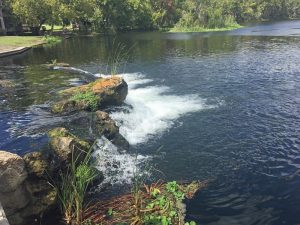
DeLeon Springs State Park offers swimming and snorkeling in the spring, and a boat tour down the spring run
Not in the national forest and not near Ocala — but about a half-hour drive east from Alexander Springs — DeLeon Springs is another swimming area in the region. Swim or snorkel in the spring, launch a boat or paddle craft (rentals available), or take a boat tour of the spring run.
An old mill house once powered by the spring is now the Old Spanish Sugar Mill restaurant, where you can prepare your own pancakes, eggs, sandwiches, and more at your own table with a built-in griddle. The restaurant is small, so the wait can be up to 2 hours. Go early for breakfast, or plan to put your name on the list and then go swimming or take the boat tour while you wait.
Additional tips for exploring Ocala National Forest
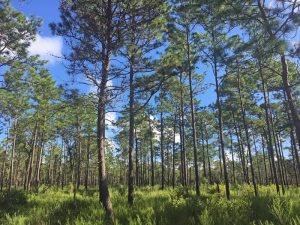
Pine flatwoods of Ocala
– The water in the springs is on average about 72F, which can be refreshing on a hot day but chilly when it’s cool. Pack your gear and change of clothes accordingly.
– Springs aren’t the only places to play in the water in the forest, just what we focused on. There are also several rivers and lakes. Boating and fishing are popular here.
– If you go on the trails, be aware of mosquitoes and ticks. Use repellent and cover up with clothing as much as possible, especially in summer. We actually came home with a tick after walking a short half-mile.
– Ocala National Forest and the surrounding area are home to black bears. It’s unlikely you’ll see a bear, but visitors should watch for them on roads and trails. Campers should practice bear-safe food storage.
– Some parts of the forest are run by the US Forest Service, and others by different private concessioners. So the entry fees and rules vary from location to location. The availability of canoe rentals may also vary, especially in winter, so call ahead if you are thinking of renting.
– In addition to camping on national forest lands, there are several privately run campgrounds, fish camps, and marinas in towns throughout the forest. Some have cabins, motels, or other rustic lodging, so if camping isn’t for you, look into these places for overnight stays. These include St. Johns River Campground and Grasshopper Lodge.
– For more family adventures in the Ocala area, check out the zip line, off-road park, or forest ORV trails.

